In the field of object-oriented programming, there are some established concepts that help manage access to the properties of objects. One of these central aspects is Getters and Setters. In Python, however, this concept is not implemented in the same way as in other object-oriented languages. In this guide, you will learn how to use Getters and Setters in Python more effectively to control access to your class properties.
Key Insights
- Getters and Setters are methods that control access to properties.
- In Python, there is an elegant way to implement Getters and Setters using the @property decorator.
- Using custom naming conventions helps clearly differentiate between internal and public properties.
- The Python convention for access modifiers differs from other languages.
Step-by-Step Guide
Step 1: Creating a Class with Properties
Start by defining a simple class. Suppose you want to create a Person class that has a name as an attribute. The name is stored as a private property in the initializer.
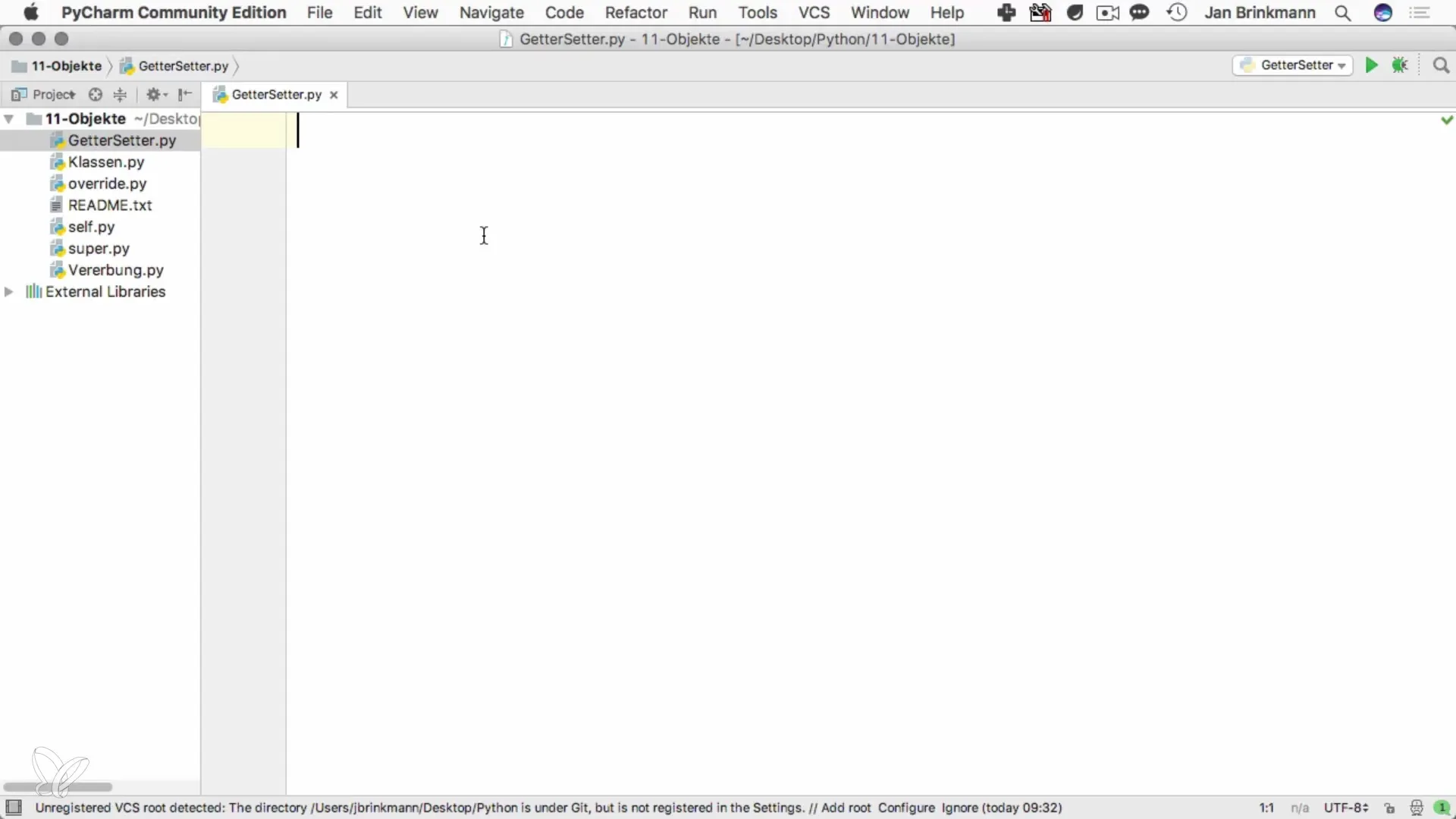
Here, _name is declared as an internal property, with the underscore prefix signaling that it is a private variable.
Step 2: Adding a Getter
To facilitate access to the internal property name, you add a Getter method. This method returns the current value of the name.
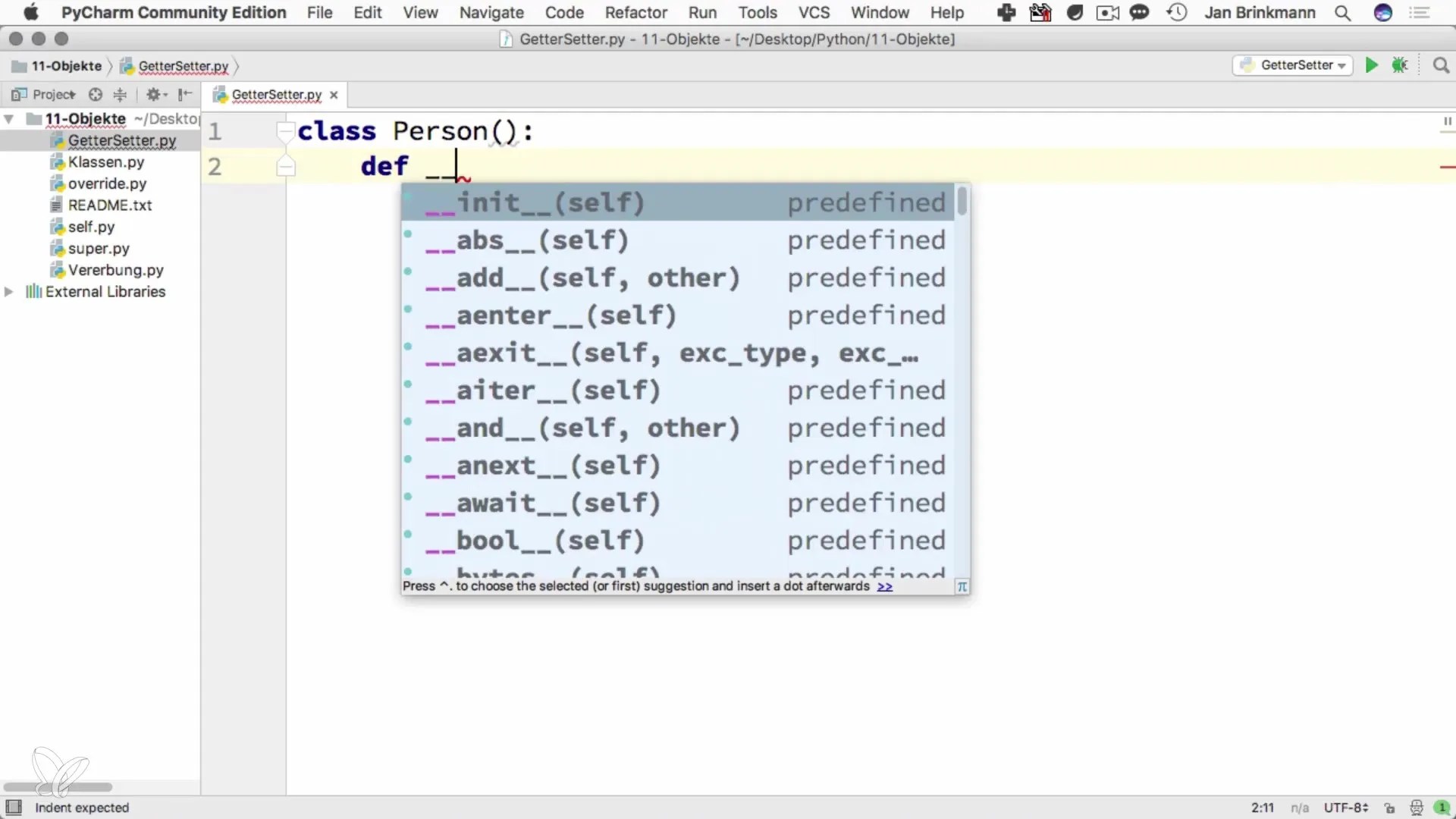
Step 3: Adding a Setter
Now, we add a Setter method so that the person's name can be changed. The Setter allows you to set new values for the internal property.
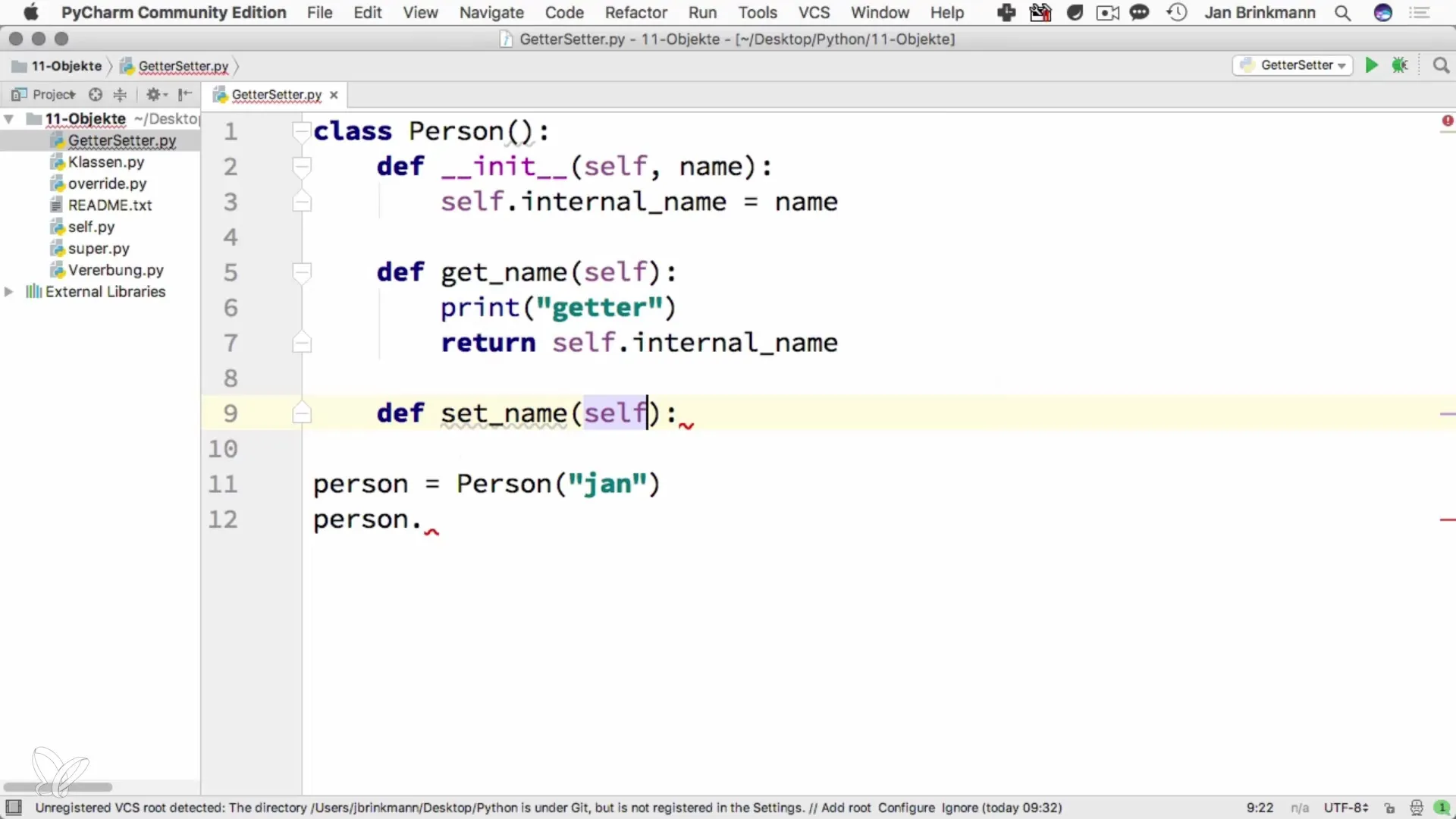
Step 4: Using @property
In Python, handling properties is even more elegant when you use the @property decorator. This allows you to define Getters and Setters directly in the class without having to create separate methods.
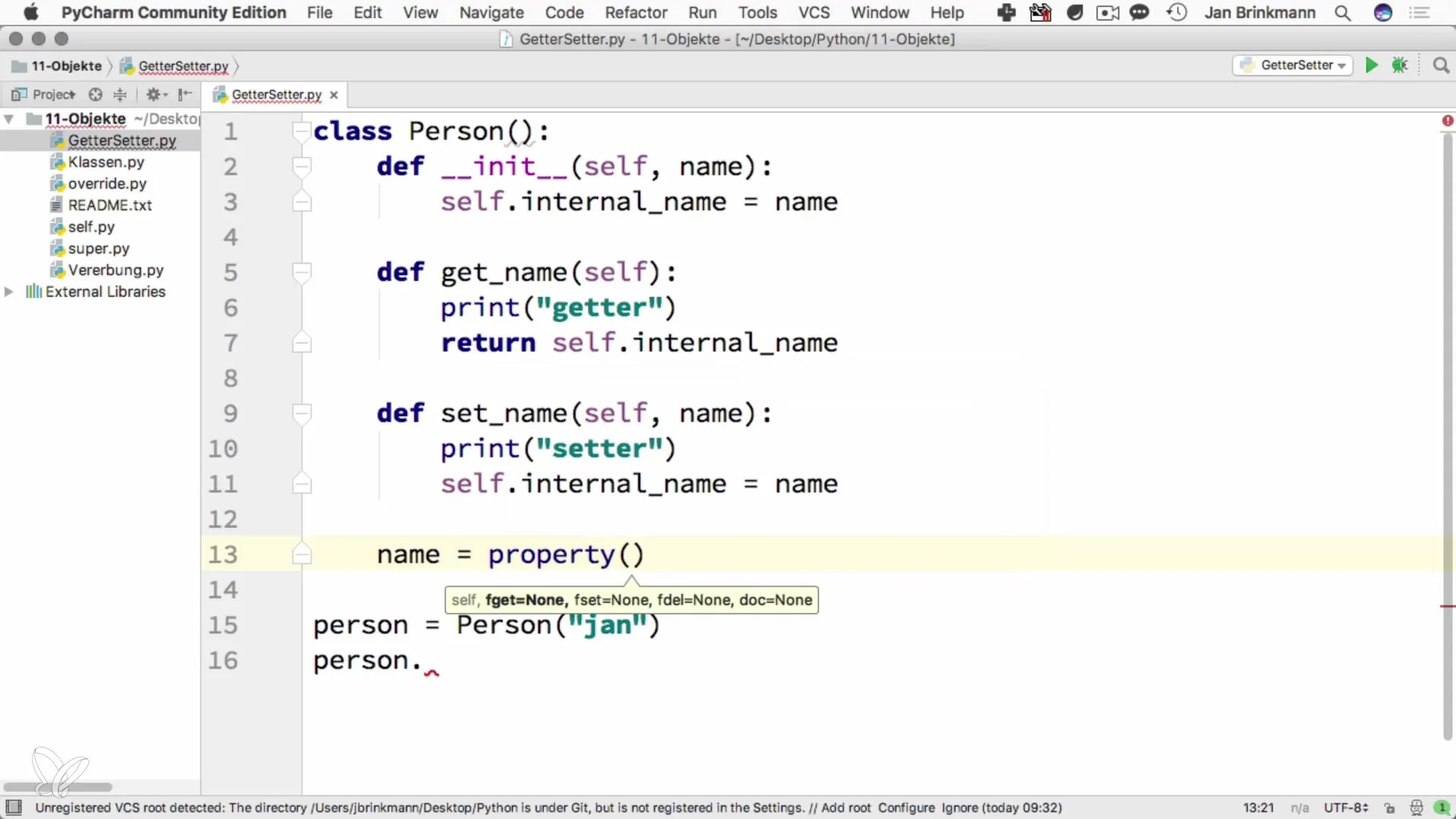
Step 5: Handling Non-Public Properties
To ensure that the internal property is not directly accessible from outside, you can use the __ prefix to encapsulate the property even more. This approach ensures that access is only through the Getter and Setter methods.
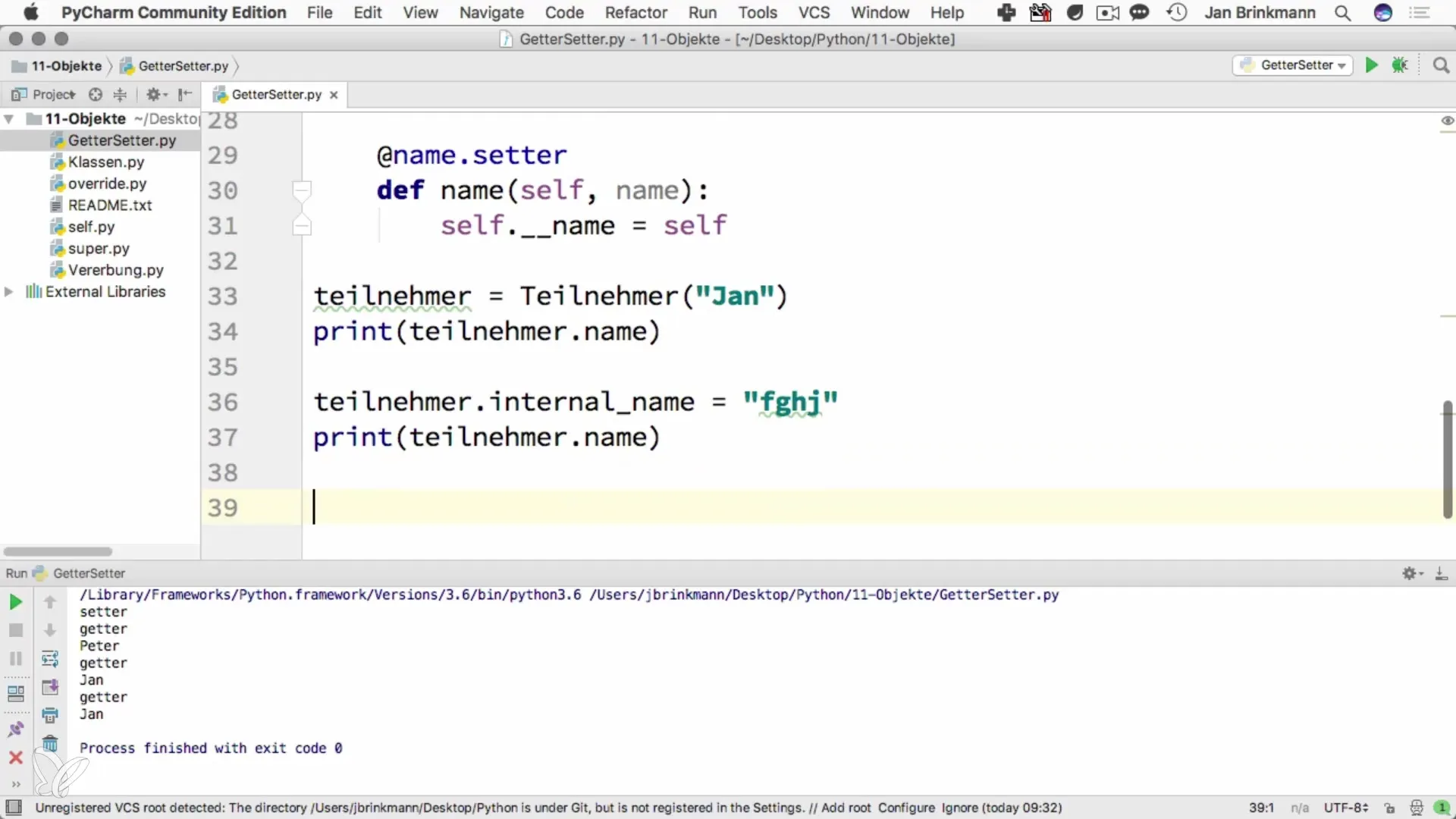
With this implementation, it is ensured that __name cannot be accessed from outside.
Summary – Getters and Setters in Python
In this guide, you have learned how to effectively implement Getters and Setters in Python to control access to object variables. You have also learned how to use @property, which makes the code clearer and more idiomatic. By encapsulating properties with a double underscore, you can ensure that internal variables are protected from unauthorized access.
Frequently Asked Questions
What are Getters and Setters in Python?Getters and Setters are methods that control and enable access to the properties of a class.
How do I implement Getters and Setters in Python?You can implement Getters and Setters using methods or the @property decorator.
What is the advantage of @property?The @property decorator allows for an elegant and intuitive access to attributes without needing to implement separate methods.
Why should properties not be directly accessible in Python?Direct access can lead to unexpected behavior and compromise the integrity of object data, so it is better to control access.
What does it mean to mark a property as "private"?A private property is indicated by preceding it with a single underscore (_) or double underscore (__) to signal that it should not be accessible directly from outside.


